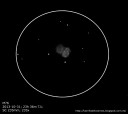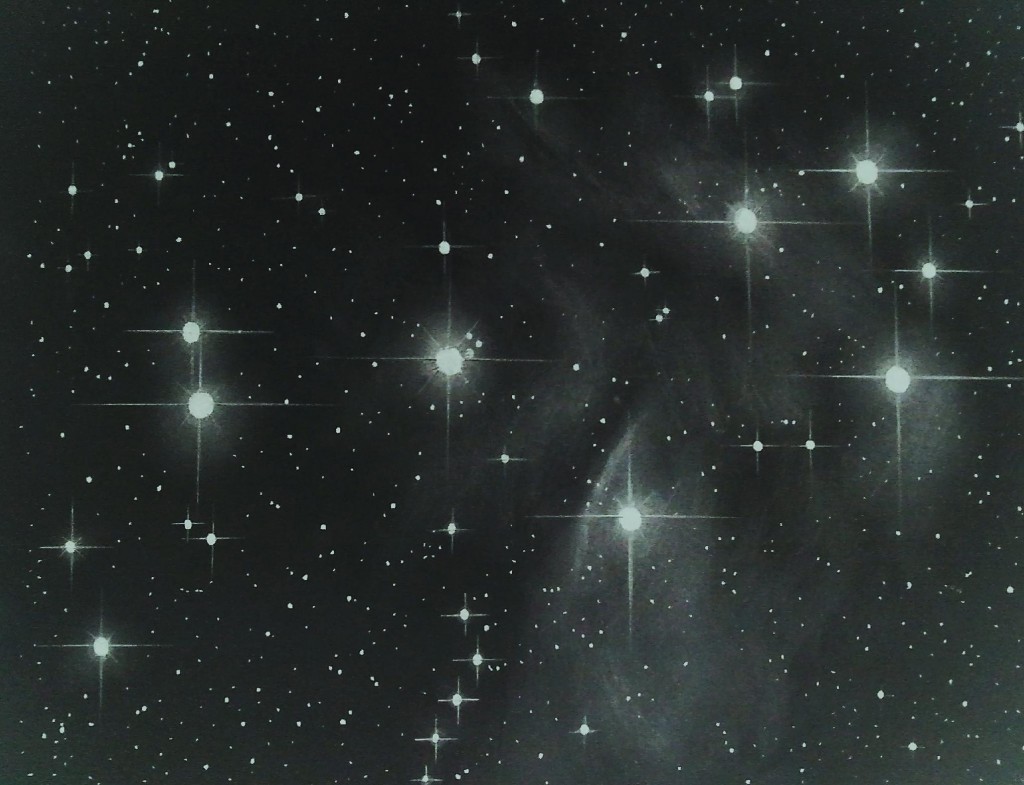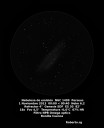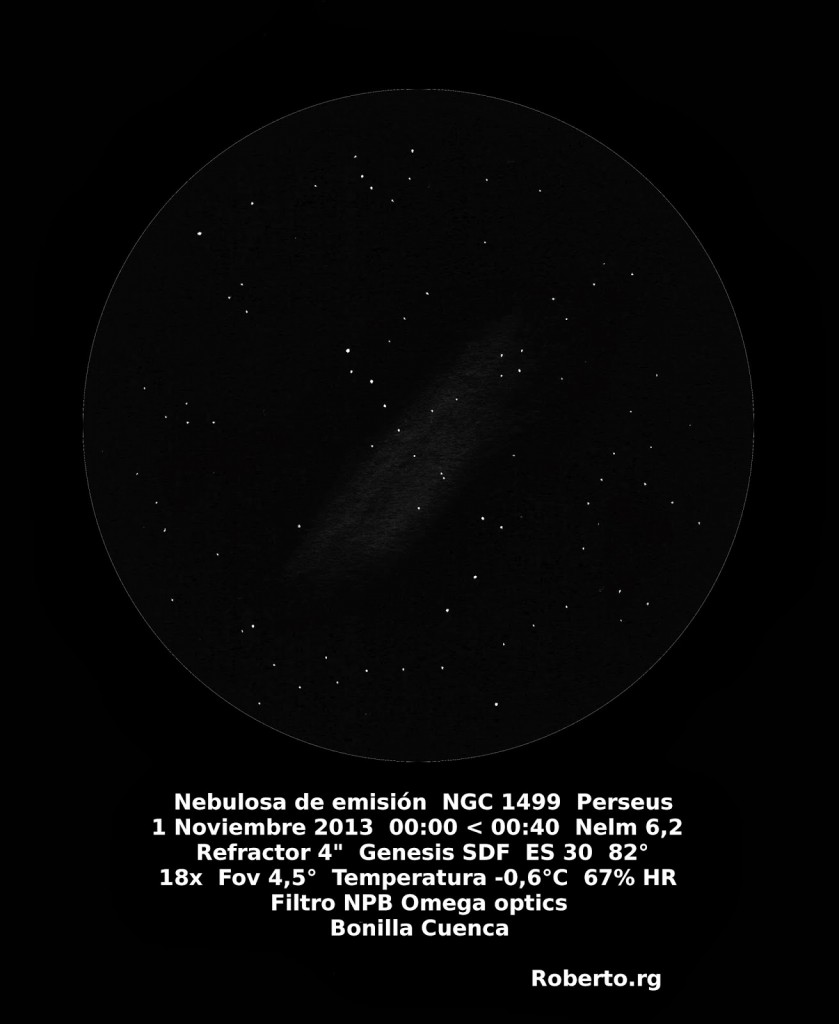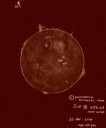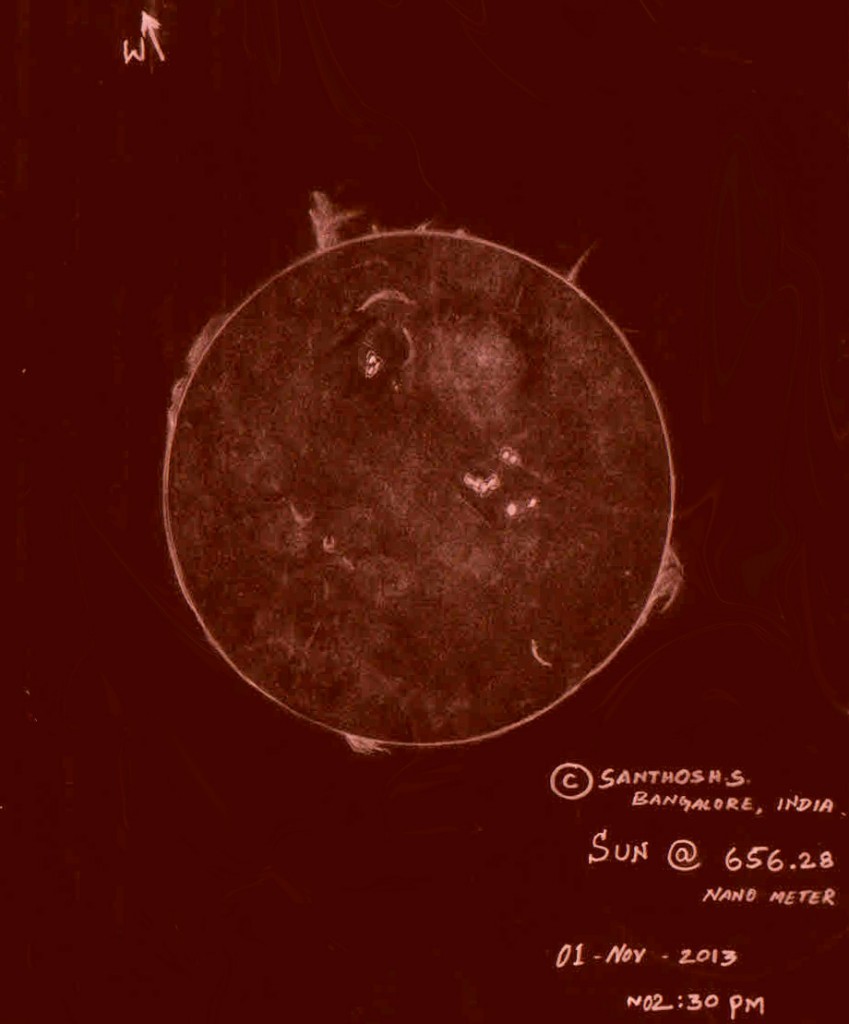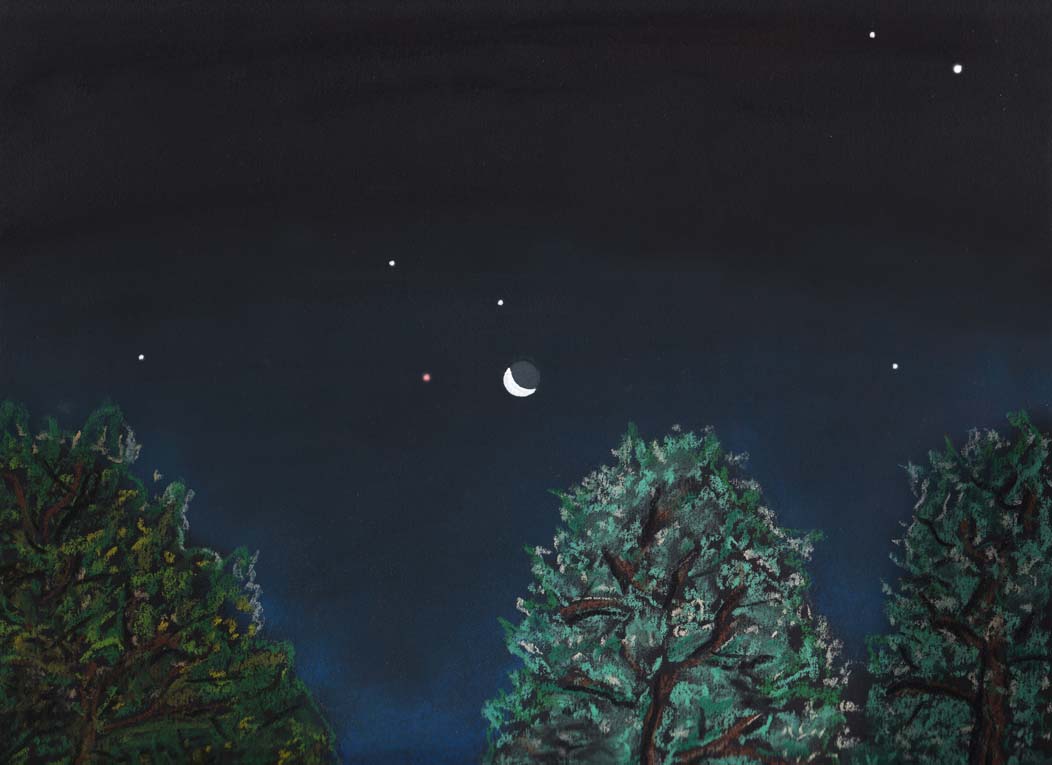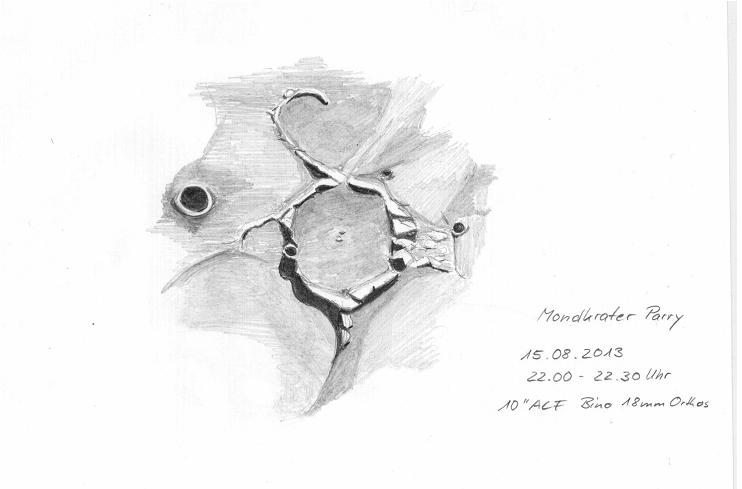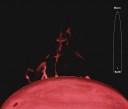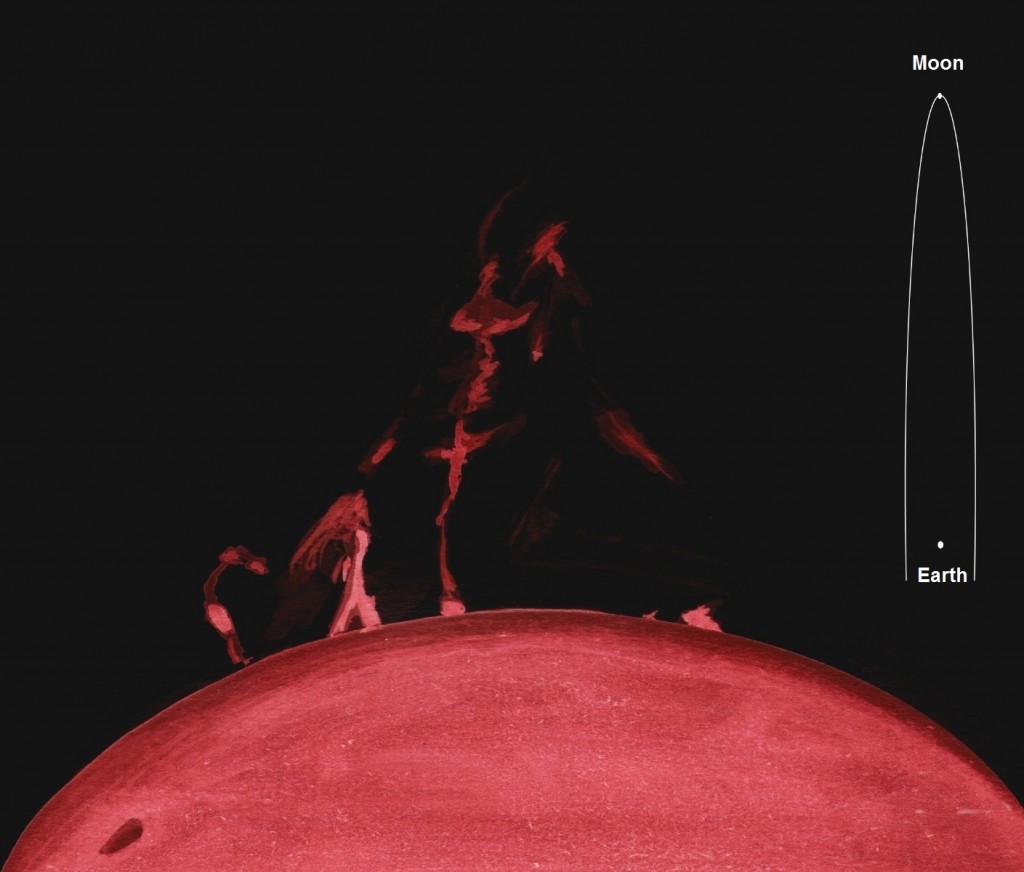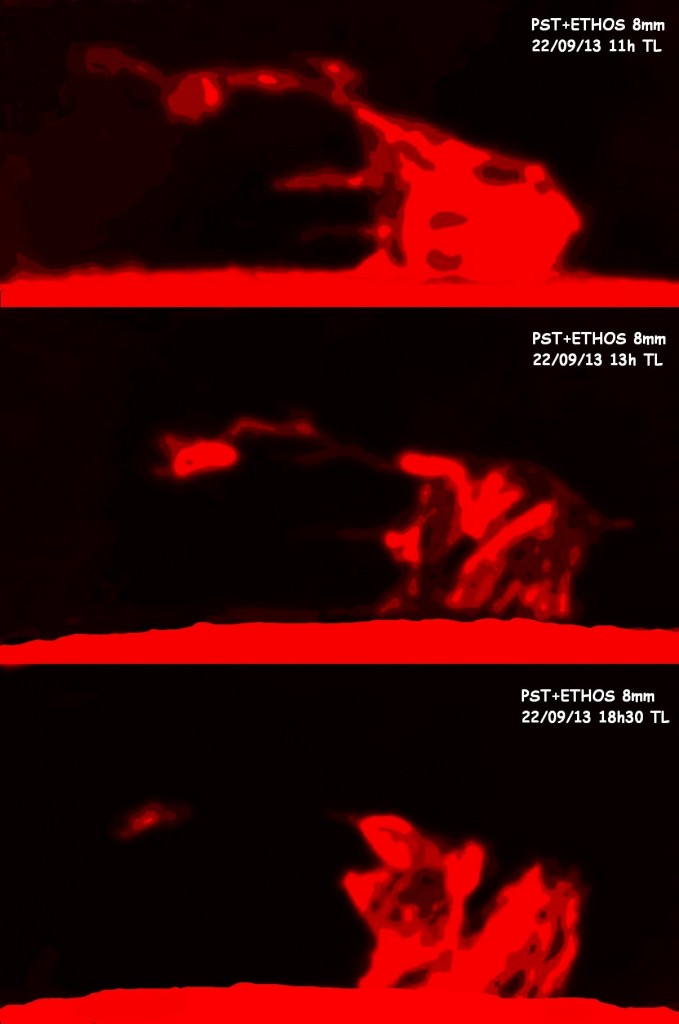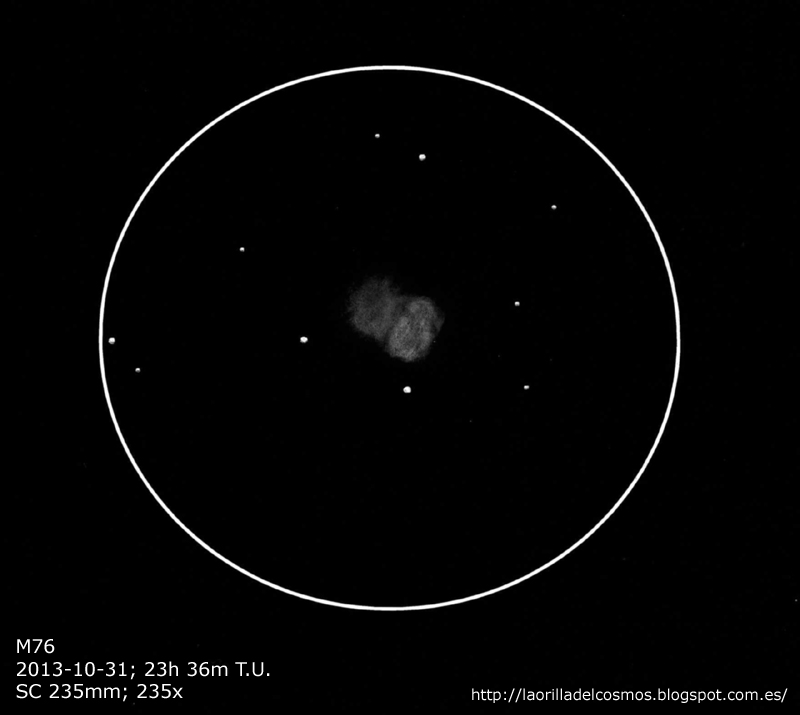
M76 -Little Dumbbell
Object Type: Planetary Nebula
Location: Tarragona – Spain
M76 is a planetary nebula really awesome observed from a dark skies and with a good telescope aperture. Two distinct sections, one brilliant and compact, the other more extensive and diffuse. A very attractive nebula to be seen on a dark night and away from any light pollution.
For more details of my observation you can visit my blog:
http://laorilladelcosmos.blogspot.com.es/2013/11/m76-la-pequena-dumbell-en-perseus-con.html
Date and Time: 2013-10-31, 23h 36m UT
Telescope: SC Celestron 9.25″ (235mm)
Eyepiece: 10mm (235x)
White paper, HB2 graphite pencil, and scanned and inverted with Photoshop
Seeing: 4/5 (5 the best)
Transparency: Clear. Rural Skies.
Location Constellation: Perseus
Position: R.A. 01h 42m
Dec. +51° 34′
Thank you and best regards.
